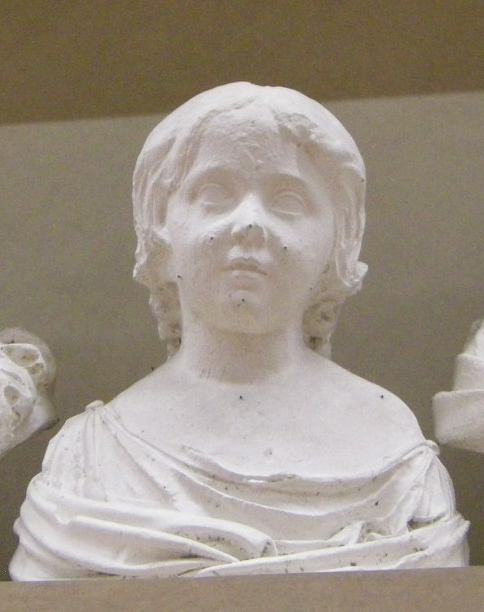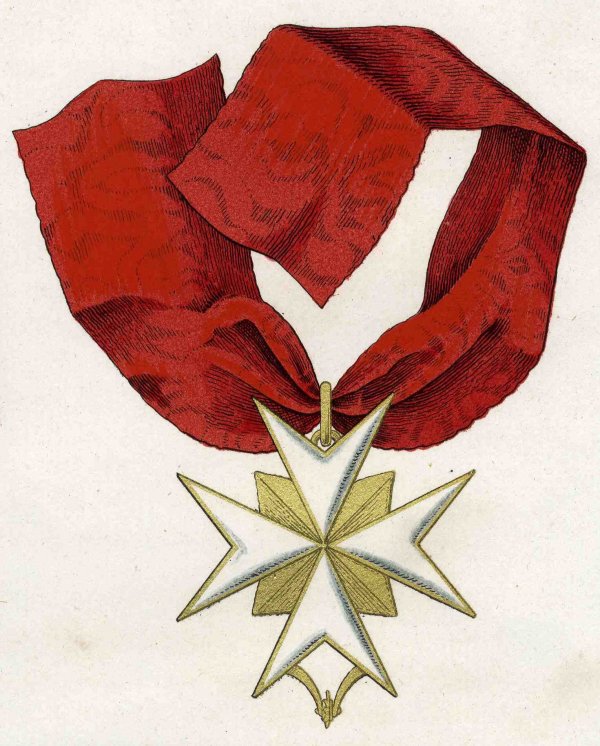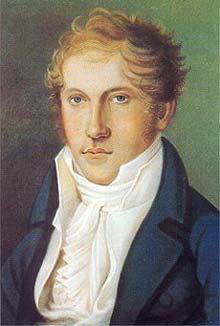|
Niccolò Paganini
Niccolò (or Nicolò) Paganini (; 27 October 178227 May 1840) was an Italian violinist and composer. He was the most celebrated violin virtuoso of his time, and left his mark as one of the pillars of modern violin technique. His 24 Caprices for Solo Violin Op. 1 are among the best known of his compositions and have served as an inspiration for many prominent composers. Biography Childhood Niccolò Paganini was born in Genoa (then capital of the Republic of Genoa) on 27 October 1782, the third of the six children of Antonio and Teresa (née Bocciardo) Paganini. Paganini's father was an unsuccessful trader, but he managed to supplement his income by playing music on the mandolin. At the age of five, Paganini started learning the mandolin from his father and moved to the violin by the age of seven. His musical talents were quickly recognized, earning him numerous scholarships for violin lessons. The young Paganini studied under various local violinists, including Giovanni Serve ... [...More Info...] [...Related Items...] OR: [Wikipedia] [Google] [Baidu] |
WikiProject Classical Music/Style Guidelines
A WikiProject, or Wikiproject, is a Wikimedia movement affinity group for contributors with shared goals. WikiProjects are prevalent within the largest wiki, Wikipedia, and exist to varying degrees within Wikimedia project, sister projects such as Wiktionary, Wikiquote, Wikidata, and Wikisource. They also exist in different languages, and translation of articles is a form of their collaboration. During the COVID-19 pandemic, CBS News noted the role of Wikipedia's WikiProject Medicine in maintaining the accuracy of articles related to the disease. Another WikiProject that has drawn attention is WikiProject Women Scientists, which was profiled by ''Smithsonian Magazine, Smithsonian'' for its efforts to improve coverage of women scientists which the profile noted had "helped increase the number of female scientists on Wikipedia from around 1,600 to over 5,000". On Wikipedia Some Wikipedia WikiProjects are substantial enough to engage in cooperative activities with outside organization ... [...More Info...] [...Related Items...] OR: [Wikipedia] [Google] [Baidu] |
Elisa Bonaparte
Maria Anna Elisa Bonaparte Baciocchi Levoy (French language, French: ''Marie Anne Elisa Bonaparte''; 3 January 1777 – 7 August 1820), better known as Elisa Bonaparte, was an imperial French princess and sister of Napoleon, Napoleon Bonaparte. She was Principality of Lucca and Piombino, Princess of Lucca and Piombino (1805-1814), Grand Duchess of Tuscany (1809-1814) and Countess of Compignano by appointment of her brother. She was the fourth surviving child and eldest surviving daughter of Carlo Buonaparte and Letizia Ramolino. A younger sister of Napoleon, Napoleon Bonaparte, she had elder brothers Joseph Bonaparte, Joseph and Lucien Bonaparte, Lucien, and younger siblings Louis Bonaparte, Louis, Pauline Bonaparte, Pauline, Caroline Bonaparte, Caroline and Jérôme Bonaparte, Jerome. As Princess of Lucca and Piombino, then Grand Duchess of Tuscany, she became Napoleon's only sister to possess political power. Their relations were sometimes strained due to her sharp tongue. Hi ... [...More Info...] [...Related Items...] OR: [Wikipedia] [Google] [Baidu] |
Ferdinando Carulli
Ferdinando Maria Meinrado Francesco Pascale Rosario Carulli (9 February 1770 – 17 February 1841) was an Italian composer for classical guitar and the author of the influential ''Méthode complète pour guitare ou lyre'', op. 27 (1810), which contains music still used by student guitarists today. He wrote a variety of works for classical guitar, including numerous solo and chamber works and several concertos. He was an extremely prolific writer, composing over 400 works for the instrument. Biography Carulli was born to an affluent, upper-class family in Naples. His father, Michele, was a distinguished literator, secretary to the delegate of the Neapolitan Jurisdiction. Like many of his contemporaries, he was taught musical theory by a priest, who was also an amateur musician. Carulli's first instrument was the cello, which he taught from the local priest, but when he was twenty he discovered the guitar and devoted his life to the study and advancement of the guitar. As there we ... [...More Info...] [...Related Items...] OR: [Wikipedia] [Google] [Baidu] |
Giovanni Battista Viotti
Giovanni Battista Viotti (12 May 1755 – 3 March 1824) was an Italian violinist whose virtuosity was famed and whose work as a composer featured a prominent violin and an appealing lyrical tunefulness. He was also a director of French and Italian opera companies in Paris and London. He personally knew Joseph Haydn and Ludwig van Beethoven. Biography Viotti was born at Fontanetto Po in the Kingdom of Sardinia (today in the province of Vercelli, Piedmont, Italy). For his musical talent, he was taken into the household of principe Alfonso dal Pozzo della Cisterna in Turin, where he received a musical education that prepared him to be a pupil of Gaetano Pugnani. He served at the Savoia court in Turin, 1773–80, then toured as a soloist, at first with Pugnani, before going to Paris alone, where he made his début at the Concert Spirituel, 17 March 1782. He was an instant sensation and served for a time at Versailles before founding a new opera house, the Théâtre de Monsieur in 17 ... [...More Info...] [...Related Items...] OR: [Wikipedia] [Google] [Baidu] |
Rodolphe Kreutzer
Rodolphe Kreutzer (15 November 1766 – 6 January 1831) was a French violinist, teacher, conductor, and composer of forty French operas, including ''La mort d'Abel'' (1810). He is probably best known as the dedicatee of Beethoven's Violin Sonata No. 9, Op. 47 (1803), known as the ''Kreutzer Sonata'', though he never played the work. Kreutzer made the acquaintance of Beethoven in 1798, when at Vienna in the service of the French ambassador, Jean-Baptiste Bernadotte (later King of Sweden and Norway). Beethoven originally dedicated the sonata to George Bridgetower, the violinist at its first performance, but after a quarrel he revised the dedication in favour of Kreutzer. Biography Kreutzer was born in Versailles, and was initially taught by his German father, who was a musician in the royal chapel, with later lessons from Anton Stamitz. He became one of the foremost violin virtuosos of his day, appearing as a soloist until 1810. He was a violin professor at the Conse ... [...More Info...] [...Related Items...] OR: [Wikipedia] [Google] [Baidu] |
Encyclopædia Britannica Eleventh Edition
The ''Encyclopædia Britannica'' Eleventh Edition (1910–1911) is a 29-volume reference work, an edition of the ''Encyclopædia Britannica''. It was developed during the encyclopaedia's transition from a British to an American publication. Some of its articles were written by the best-known scholars of the time. This edition of the encyclopaedia, containing 40,000 entries, has entered the public domain and is easily available on the Internet. Its use in modern scholarship and as a reliable source has been deemed problematic due to the outdated nature of some of its content. Modern scholars have deemed some articles as cultural artifacts of the 19th and early 20th centuries. Background The 1911 eleventh edition was assembled with the management of American publisher Horace Everett Hooper. Hugh Chisholm, who had edited the previous edition, was appointed editor in chief, with Walter Alison Phillips as his principal assistant editor. Originally, Hooper bought the rights to th ... [...More Info...] [...Related Items...] OR: [Wikipedia] [Google] [Baidu] |
Order Of The Golden Spur
The Order of the Golden Spur ( it, Ordine dello Speron d'Oro, french: Ordre de l'Éperon d'or), officially known also as the Order of the Golden Militia ( la, Ordo Militia Aurata, it, Milizia Aurata), is a papal order of knighthood conferred upon those who have rendered distinguished service in propagating the Catholic faith, or who have contributed to the glory of the Church, either by feat of arms, by writings, or by other illustrious acts. History Before 19th century: a noble order It is accounted the earliest papal chivalric institution. The Order of the Golden Spur had its origins in the title '' Count palatine of the Lateran Palace'', which was in the gift of the Holy Roman Emperor in the fourteenth century: Charles IV, Holy Roman Emperor conferred the title on one Fenzio di Albertino di Prato, 15 August 1357, at Prague. The Order began to be associated with the inheritable patent of nobility in the form of count palatinate during the Renaissance; Emperor Frederick ... [...More Info...] [...Related Items...] OR: [Wikipedia] [Google] [Baidu] |
Pope Leo XII
Pope Leo XII ( it, Leone XII; born Annibale Francesco Clemente Melchiorre Girolamo Nicola della Genga (; 2 August 1760 – 10 February 1829), was head of the Catholic Church and ruler of the Papal States from 28 September 1823 to his death in February 1829. Leo XII was in ill health from the time of his election to the papacy to his death less than 6 years later, though he was noted for enduring pain well. He was a deeply conservative ruler, who enforced many controversial laws, including one forbidding Jews to own property. Though he raised taxes, the Papal States remained financially poor. Biography Family Della Genga was born in 1760 at the Castello della Genga in the territory of Fabriano to an old noble family from Genga, a small town in what is now the province of Ancona, then part of the Papal States. He was the sixth of ten children born to Count Ilario della Genga and Maria Luisa Periberti di Fabriano, and he was the uncle of Gabriele della Genga Sermattei, who ... [...More Info...] [...Related Items...] OR: [Wikipedia] [Google] [Baidu] |
Louis Spohr
Louis Spohr (, 5 April 178422 October 1859), baptized Ludewig Spohr, later often in the modern German form of the name Ludwig, was a German composer, violinist and conductor. Highly regarded during his lifetime, Spohr composed ten symphonies, ten operas, eighteen violin concerti, four clarinet concerti, four oratorios, and various works for small ensemble, chamber music, and art songs.Clive Brown. "Spohr, Louis." Grove Music Online. Oxford Music Online. 18 May 2012 Spohr invented the violin chinrest and the orchestral rehearsal mark. His output spans the transition between Classical and Romantic music, but fell into obscurity following his death, when his music was rarely heard. The late 20th century saw a revival of interest in his oeuvre, especially in Europe. Life Spohr was born in Braunschweig in the duchy of Brunswick-Wolfenbüttel to Karl Heinrich Spohr and Juliane Ernestine Luise Henke, but in 1786 the family moved to Seesen. Spohr's first musical encouragement ... [...More Info...] [...Related Items...] OR: [Wikipedia] [Google] [Baidu] |
Charles Philippe Lafont
Charles Philippe Lafont (1 December 178123 August 1839) was a French violinist and composer. He has been characterized as one of the most eminent violinists of the French school.See Family Tree, under External links Biography Born in Paris, he received his first lessons from his mother. He later studied with Rodolphe Kreutzer and Pierre Rode. His teachers taught him the classical technique of the Viotti school, which he made more brilliant.See biography under External links As early as 1792, he toured Germany and other parts of Europe giving successful concerts. On the outbreak of the French Revolution, he left France, travelling through Europe. In 1808, he became chamber violinist to Tsar Alexander I of Russia. In 1815, he returned to France to become first violinist of the royal chamber musicians of Louis XVIII of France and musical accompanist to the Duchess of Berry. In 1816, he participated in a contest with Niccolò Paganini, in which neither won. However, the contest was hel ... [...More Info...] [...Related Items...] OR: [Wikipedia] [Google] [Baidu] |
La Scala
La Scala (, , ; abbreviation in Italian of the official name ) is a famous opera house in Milan, Italy. The theatre was inaugurated on 3 August 1778 and was originally known as the ' (New Royal-Ducal Theatre alla Scala). The premiere performance was Antonio Salieri's ''Europa riconosciuta''. Most of Italy's greatest operatic artists, and many of the finest singers from around the world, have appeared at La Scala. The theatre is regarded as one of the leading opera and ballet theatres globally. It is home to the La Scala Theatre Chorus, La Scala Theatre Ballet, La Scala Theatre Orchestra, and the Filarmonica della Scala orchestra. The theatre also has an associate school, known as the La Scala Theatre Academy ( it, Accademia Teatro alla Scala, links=no), which offers professional training in music, dance, stagecraft, and stage management. Overview La Scala's season opens on 7 December, Saint Ambrose's Day, the feast day of Milan's patron saint. All performances must end befor ... [...More Info...] [...Related Items...] OR: [Wikipedia] [Google] [Baidu] |







